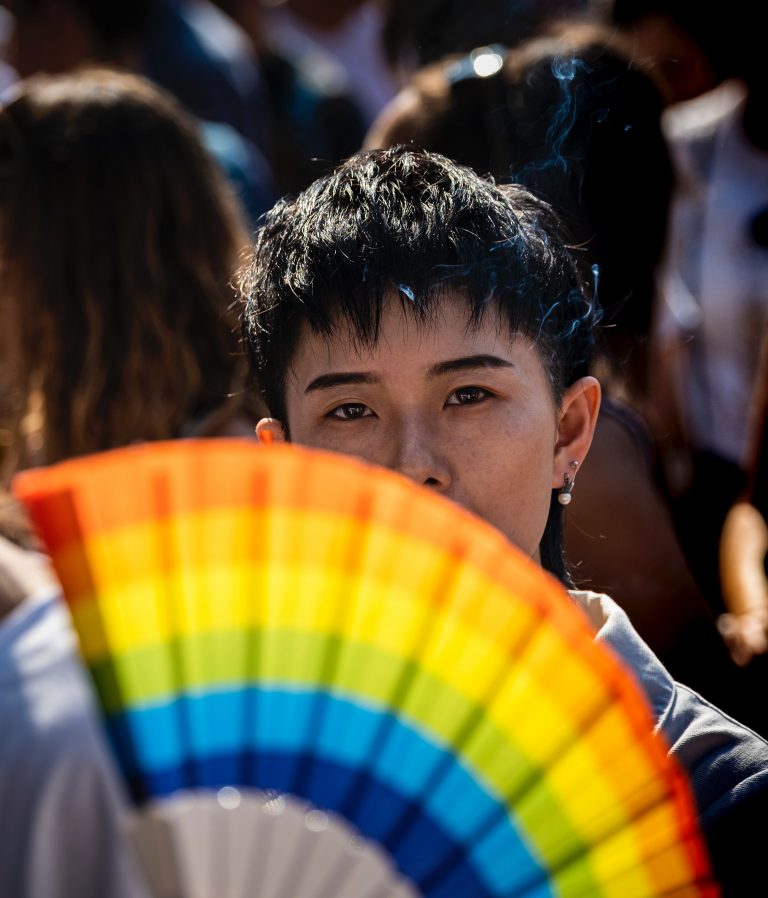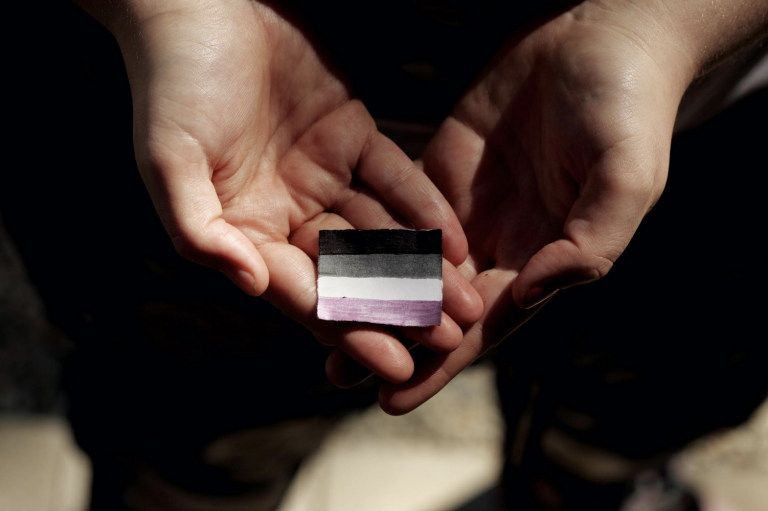The Aromantic Experience: The Societal Pressures of Romantic Love

For those of us who experience romantic attraction, we often assume that the desire for a romantic partner and the characteristics associated with romantic relationships—such as holding hands or kissing—are universal and innate. However, this assumption of amatonormativity overlooks an important reality: not everyone experiences romantic attraction in the same way or at all.
What is Aromanticism?
The Ace and Aro Advocacy Project (TAAAP) defines aromanticism as, “[someone] who experiences little to no romantic attraction”. For example, according to Aromantic Spectrum Awareness Week (ASAW), aromantic people may feel “repulsed by romance,” “uninterested in romantic relationships,” or have difficulties relating to experiences such as ‘falling in love’ or ‘crushes’.
What is Aromanticism?: Aromantic Relationships
However, this does not mean that all aromantic people dislike the concept of romance, do not feel love, or have relationships with other people or long-term relationships. Some aromantic individuals do enjoy romantic media, and each aromantic person experiences aromanticism differently. There are also many types of love beyond romantic love. There is familial love, the love between friends, and more that aromantic individuals feel and enjoy.
Additionally, some aromantic people also engage in queerplatonic relationships (QPRs), which are committed relationships that neither fall into the category of platonic friendship nor romantic relationships. According to TAAAP, QPRs “may or may not be sexual, and they may or may not involve living together, raising children, sharing finances and life decisions, etc.” QPRs are different for each person and are defined by the people in the relationship.
What is Aromanticism?: Romantic Attraction vs Sexual Attraction
Aromanticism may sound similar to asexuality, which is a lack of sexual attraction. However, aromanticism differs from asexuality in how it focuses solely on romantic attraction. Aromanticism and asexuality are not explicitly exclusive of each other. Some individuals may identify as both aromantic and asexual, as the former describes their romantic identity as someone who experiences little to no romantic attraction, and the latter describes their sexual identity. However, not all aromantic people identify as asexual and instead have a different sexual identity.
This separation between romantic and sexual identity is referred to as the split attraction model. However, not all people who identify as aromantic utilize the split attraction model. Instead, some find that solely identifying as aromantic is the best way to describe themselves.
Additionally, just like other identities, aromanticism is a spectrum. There are additional identities that fall under the umbrella of aromanticism, such as demiromantic, gray-romantic, recipromantic, aroflux, and many more, according to AUREA. For example, identifying as demiromantic means that the person only feels romantic attraction toward others after they have developed a close emotional connection with the other person.
Aromantic Representation in Media
Aromanticism as an identity is underrepresented in society. There is little scientific research or data surrounding aromanticism.
However, there are some instances of representation in media of aromanticism. In comics, there are two notable characters who identify as aromantic: Jughead Jones of the Jughead (2015) series is an aromantic asexual, and Gwen in Love Unlimited: Gwenpool Infinity Comic #4, who recently came to terms with her identity and explicitly identifies as an aromantic asexual within the comic. Aromanticism has also appeared in television shows, such as the series Heartstopper, which depicts the secondary character Isaac Henderson as an aromantic asexual. There is also representation in books like Loveless by Alice Oseman, which follows Georgia Warr and her journey of self-discovery and self-acceptance of his identity as an aromantic asexual.
While there are only a few examples of aromanticism in the media, these few examples are significant as they bring attention and validation to aromanticism and aromantic individuals to the public. These examples display a potential trend toward more representation in mainstream media in the future as aromanticism becomes more common in society and media.
Aromantic Experiences
For each aromantic individual, their experience with aromanticism, how they experience the world, and how they interact with society is different. I spoke to Charlie Fry about their own experiences and feelings as someone who identifies as aromantic-asexual.
For Fry, who does not experience an aversion to romance, “Romance is something fun to watch in stories. I like reading about or watching people fall in love, and I think it is nice that it happens in real life for others,” but when applied to themself it feels imposed upon them by societal expectations. They state, “I don’t seek it out for myself, though, and to be perfectly honest, being in a romantic partnership with someone feels stifling. It makes me feel like I’ve been trapped into an obligation that everyone else expects of me.”
However, after they stopped deigning to the societal pressure that stifled them, they describe that, “life has vastly improved,” and that, “I’ve felt more comfortable on my own than I ever did when I was trying to date.” Fry also notes that this societal pressure is not only stifling for them as an aromantic individual, but they also recognize that it is stifling for their non-aromantic friends. The pressure to date, to have a romantic partnership, or to have a family weighs down not only on aromantic people but also on those who do not identify as aromantic. It is a societal pressure that affects all of us.
Understanding Aromanticism
When asked about what they would like others to understand about aromanticism, Fry replied that even though aromanticism is “a lack of romantic identity, it is still a romantic identity that is part of the queer community. Second, people who are aromantic but still sleep with other people are not cruel or heartless,” but also emphasized that, “Aromantic people are not broken, traumatized, or incapable of being empathetic or loving.”
Fry’s response references some of the misconceptions surrounding aromantics. Some believe that aromantic people do not belong to the queer community because their identity is due to an absence, that aromantic people overall do not experience emotions, and that aromanticism is not innate but instead caused by external factors. However, as Fry explains, aromanticism is an innate identity that is a part of themself. There is no external reason for aromanticism. It is simply a natural part of them.
Importantly, Fry emphasizes that their identity and experiences are natural and that there is nothing wrong with identifying as aromantic. They state, “Some people are aroace, as I am, and that is fine,” and that no matter what they do, whether they appear sexy, confident, or if in one moment they feel like cuddling, they are still aromantic.
They impart an important message that being aromantic is only one aspect of themself, that it is “an important part that I love deeply, but I am also more than my aromanticism, and so is every aro person out there…Every person on this planet is more than their romantic identity and status. I want people to celebrate my aromanticism, but I also want people to celebrate the me who exists underneath that.”
Beyond Love: Embracing Aromantic Experiences
While some people have never heard of aromanticism or have misconceptions about aromanticism, it is significant to shed light upon this romantic orientation and the diverse experiences of these individuals. By highlighting the aromantic experience through speaking with aromantic individuals and supporting media that portrays aromanticism, we not only bring attention to this underrepresented romantic orientation but also normalize and validate the experiences of those not recognized by society and our oppressive societal norms. Aromantics exist, you are not alone in your experiences, and that your experiences are valid and a natural part of yourself.


